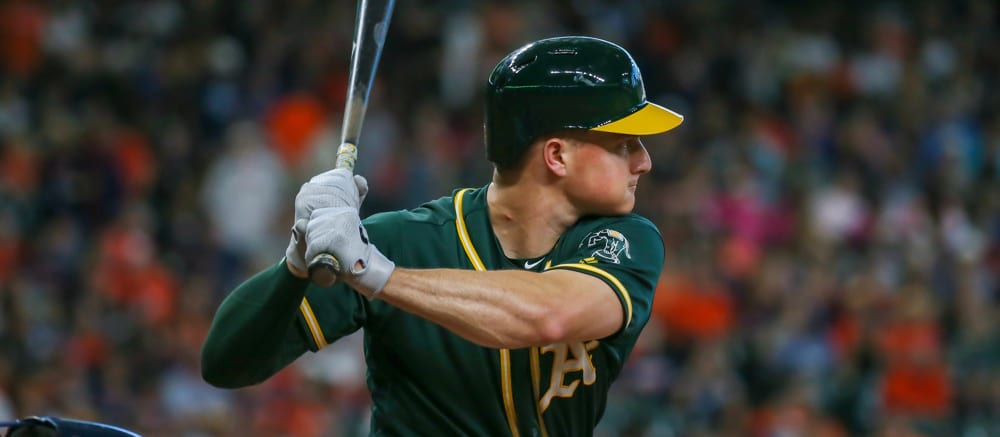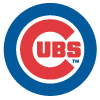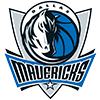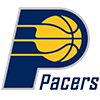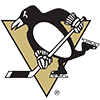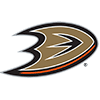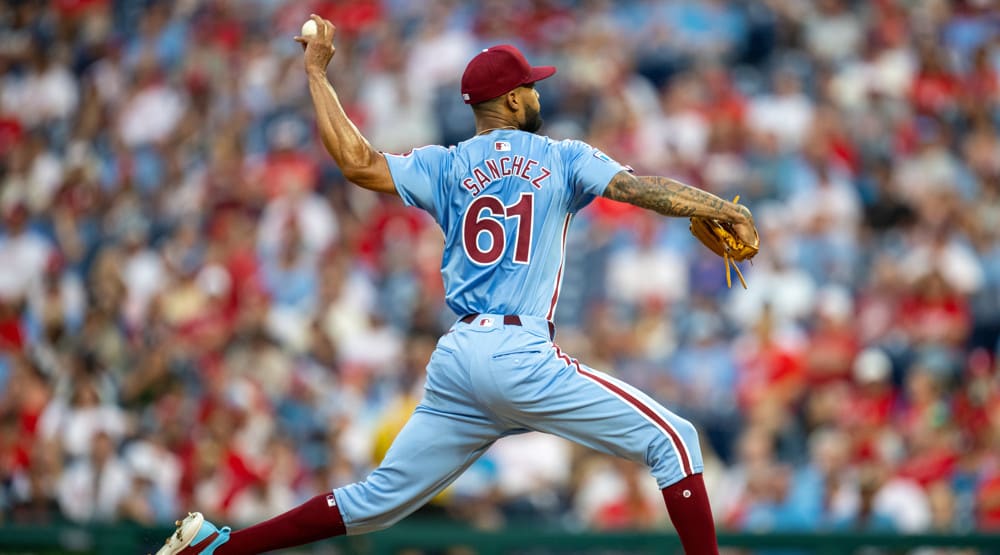In baseball parlance, third base is the hot corner. In fantasy baseball, it's best described as tepid. In fact, in terms of depth, third base is the weakest of the infield spots. It's saved by an unusual number of players eligible at other positions. There are some solid top-end performers, but the back end of the pool isn't as staunch as previous seasons.
As will be done as we move further into these rankings, players previously thumbnailed will be listed with a link to their discussion. The list will extend far enough so 20 fresh blurbs will be shared. As such, welcome to my top 28 third basemen.
28. Ryan McMahon, Colorado Rockies
By means of perspective, McMahon checks in as the 25th second baseman when everyone eligible at the position Is included. Last season was a pretty good baseline for him. A 29.7 percent strikeout rate caps his average, while Coors helps his power with 18 of his 24 long balls coming at altitude. McMahon is thought of as a platoon batter, but he's hit southpaws a tad better than right-handers over the past three seasons. Still, he isn't in line for regular playing time with Daniel Murphy and Garrett Hampson in the immediate picture and Brendan Rodgers looming. McMahon's extreme home splits are best suited for leagues with a deep enough reserve to slide someone else in for a week where the Rockies are on the road. He'll turn just 25 years old in early December so
In baseball parlance, third base is the hot corner. In fantasy baseball, it's best described as tepid. In fact, in terms of depth, third base is the weakest of the infield spots. It's saved by an unusual number of players eligible at other positions. There are some solid top-end performers, but the back end of the pool isn't as staunch as previous seasons.
As will be done as we move further into these rankings, players previously thumbnailed will be listed with a link to their discussion. The list will extend far enough so 20 fresh blurbs will be shared. As such, welcome to my top 28 third basemen.
28. Ryan McMahon, Colorado Rockies
By means of perspective, McMahon checks in as the 25th second baseman when everyone eligible at the position Is included. Last season was a pretty good baseline for him. A 29.7 percent strikeout rate caps his average, while Coors helps his power with 18 of his 24 long balls coming at altitude. McMahon is thought of as a platoon batter, but he's hit southpaws a tad better than right-handers over the past three seasons. Still, he isn't in line for regular playing time with Daniel Murphy and Garrett Hampson in the immediate picture and Brendan Rodgers looming. McMahon's extreme home splits are best suited for leagues with a deep enough reserve to slide someone else in for a week where the Rockies are on the road. He'll turn just 25 years old in early December so there's plenty of time to correct some flaws, notably his contact rate. That said, despite an excellent average exit velocity, this isn't the profile to chase in the hopes he puts more balls in play.
27. Scott Kingery, Philadelphia Phillies
When the Phillies signed Kingery to a contract extension before he played an inning in MLB, they likely didn't expect they were paying for a utility player. That said, his ability to play all over the diamond is an asset. Besides, he'll likely eventually settle into one spot, though perhaps not this season. Originally earmarked for a middle infield role, third base is the likeliest spot he could fill regularly, depending what Philadelphia does with Maikel Franco. Regardless, Kingery will play enough to be a fantasy factor. His 101 wRC+ was just a tick above average, but that doesn't include 15 steals. There's plenty of room for growth as Kingery's only plus asset is sprint speed. His contact rate is poor while his average exit velocity is low. While there's nothing that screams "break out", his athleticism and multi-position eligibility separate Kingery from other lower-end options, especially if you're looking for some steals.
26. Brian Anderson, Miami Marlins
Anderson is a nice player, stuck in a park detrimental to his skill set. That said, his home/away splits are quite similar. However, there's an intrinsic global home field advantage (though it's declining). As such, splits should be better at home, but since they're not, Anderson is hurt by Marlins Park, just not by as much as some others. Whether it was by design or happenstance, in 2019 he added loft without sacrificing contact or average exit velocity. As you might expect, a power spike ensued. Batters tend to give back some of their newly acquired fly ball tendencies, so expect a drop in power, with the level of the drop being the question. As alluded to, it doesn't help that Anderson plays half his games in a venue harder to leave than most. His defense at third base improved significantly, which is relevant as Miami has a bevy of up and coming fly chasers who could block him in a corner outfield spot. Anderson's floor is stable, but we may have seen his ceiling last year.
25. J.D. Davis, New York Mets
After a couple of years where Davis appeared overmatched in short stints in The Show, the former Astros prospect emerged in 2019, slashing .342/.401/.595 the last three months of the season. He cut down on his strikeouts while hitting the ball with increased authority. His second-half surged was supported by the underlying metrics. As has been talked about a lot in these scenarios, most players give back some of their gains. The increased contact bodes well for a soft fall as a change in approach and honing plate skills can also aid quality of contact. Playing time is up in the air as Davis saw much of his action as an injury replacement. That said, after his finish to last season, the Mets will find a place for him. If it's clear Davis will be a regular, likely at third or in left field, he'll move up a few spots. The catch is, he is a subpar defender at both spots.
24. Kyle Seager, Seattle Mariners
Some like to take chances with later picks, others look to shore up categories or provide some stability if risks were taken earlier. Seager is for the latter drafter, as he's very consistent and durable, albeit with a low batting average. With respect to durability, he didn't debut until May 25 after requiring wrist surgery for an injury suffered diving for a ball in spring training. It was the only visit to the IL in his career and he missed just three games the rest of the season. Seager's contact and hard-hit rate are both above average. However, as a fly ball hitter in a big park, his BABIP feels the effect of fly ball outs. While he doesn't have a ton of upside, there may still be a .265-.275 season left in Seager's stick if he can enjoy a little batted ball luck.
23. Tommy Edman, St. Louis Cardinals
Covered in My Top 20 Second Basemen.
22. Justin Turner, Los Angeles Dodgers
It's hard to believe last season's 135 games and 549 plate appearances were both the second most Turner has recorded in his career. The potential for missed games hurts his ranking. The catch is, over half the games Turner missed were in September while he was nursing a sore back. He reportedly could have played through it, but the club wanted to have him 100 percent for the playoffs. On a per-start basis, he's top 15 as his skills are still strong. In 2016, Turner was one of the first launch angle converts and remains so without having given back contact or exit velocity. Even with missing some games he could have played, the safe expectation is for him not to exceed last season's playing time.
21. Starlin Castro, Free Agent
Covered in My Top 20 Second Basemen.
20. Mike Moustakas, Free Agent
Covered in My Top 20 Second Basemen.
19. Josh Donaldson, Free Agent
The Braves got their money's worth last season, and then some. Now, Donaldson is betting on himself by rejecting Atlanta's qualifying offer. Who can blame him? He'll enter his age-34 season coming off a relatively healthy, 37-homer campaign. In addition, most defensive measures suggest he can still get it done with the leather. The veteran will scoot up a few spots if he lands in a hitter-friendly park, though he could also be hurt in a pitcher's venue. There's also the question of whether Donaldson can go two straight seasons without an IL stint. He was one of the most durable players in the league from 2013-2016, then missed large chunks of the following two seasons, primarily with shoulder issues. He had no sign of that last season, but it's still prudent to take the conservative route.
18. Yuli Gurriel, Houston Astros
Covered in My Top 20 First Basemen
17. Vladimir Guerrero Jr., Toronto Blue Jays
Sometimes we forget just how hard baseball is, particularly for a 20-year-old. Guerrero serves as a reminder. That said, if he didn't come with such high expectations, everyone would be lauding his debut season instead of lamenting expending a high pick or a good chunk of an auction budget to be disappointed. His long-term conditioning is still a concern, but the raw skills remain. To take full advantage of his bat speed, Guerrero will need to loft more batted balls. Chances are, someone will still chase the hype and promise. As fun as it is to be right, it's more fun to win. I'm taking the "show me" approach.
16. Eduardo Escobar, Arizona Diamondbacks
Covered in My Top 20 Second Basemen.
15. Max Muncy, Los Angeles Dodgers
Covered in My Top 20 First Basemen
14. Miguel Sano, Minnesota Twins
Aaron Judge, Joey Gallo and Sano – take your pick. They don't hit the ball; they punish it. They also fan a ton, the latter two in particular. The key with Sano is health and conditioning. The more I look at last season, the more optimistic I become. He had surgery for a mysterious lacerated ankle, finally taking the field in mid-May. While he missed time now and again, he avoided another visit to the IL. His defense at the hot corner continues to be below average. A move across the diamond is possible, though C.J. Cron is also productive when healthy and Nelson Cruz occupies the designated hitter spot.
13. Manny Machado, San Diego Padres
Here's a theory: Machado hasn't been disappointing. Instead, expectations were unfairly elevated after his 2015 campaign. We saw a guy with power and speed, playing in a great park with a chance to get better. The truth is, Machado is a very good player who was aided by volume (713 plate appearances) and Camden Yards, who had an outlier season with respect to steals. Last season's perceived dip was a repercussion of moving into a park that suppresses offense, as his underlying metrics were similar to previous campaigns.
12. Kris Bryant, Chicago Cubs
Once considered to be a perennial first rounder, Bryant hasn't delivered as expected. Injuries have played a part, but they don't account for everything. Bryant's plate skills remain strong and he's still a fly ball hitter. The issue has been a declining hard-hit rate/average exit velocity. Even in cozy Wrigley Field, his fly balls too often become outs. There's nothing wrong with being a very good ballplayer. Bryant turns 28 years old right after the New Year, so there's still time to realize the stud potential he was labeled with. I'm not willing to pay for the possibility.
11. Eugenio Suarez, Cincinnati Reds
Coming off a 49-home run season, it's fair to question why I don't have Suarez in the top 10. Granted, in terms of expected earnings, he's pennies away, but still. I'm guessing there will be some controversial picks ahead that play a major part. It's easy to say Suarez can't repeat his power surge, but his 34 long balls in 2018, when the ball incurred more drag, indicates the fall won't be too damning. A lack of speed with a lower average than many ranked higher are bigger factors in his placement. However, this is a perfect example of why projected earnings-based rankings don't always dictate draft selections. With regards to game theory, picking Suarez with the intent on stuffing the HR, RBI and runs boxes while addressing speed later is perfectly viable, if not not for the faint of heart.
10. Yoan Moncada, Chicago White Sox
After a couple of sluggish seasons, Moncada is on the verge of being the uber-producer many envisioned when he was the jewel of the Red Sox system. Most will point to a rising contact rate, which of course is vital. However, his all-around game is maturing. Moncada's hard-hit rate and average exit velocity have improved the past two seasons. His sprint speed remains above average. This portends to a BABIP well above league average, though not as lofty as last season's bloated .406 mark. If Moncada can continue improving his plate skills while running a little more, we're looking at a potential first rounder.
9. Matt Chapman, Oakland Athletics
What's the next number in this series: 4, 5, 6? Most would answer 7. Let's talk projection theory. Conventional methods would take a weighted average, so the answer would be between 5 and 6, assuming six is the most recent data. This is the dilemma facing those of us prognosticating Chapman. His skills are trending up. Will they continue to improve, or will that trend reverse? Keep in mind, skills are ranges, so a step back in his stats may not even require a decline in skills; Chapman could simply play to a lower percentile within his range. The bottom line is the hand-eye coordination that makes him one of the best fielders in the game is translating to the dish, where his contact is growing, in terms of both quality and quantity. Chapman also benefits from hitting in the two hole, at least in terms of plate appearances and runs.
8. Jeff McNeil, New York Mets
Covered in My Top 20 Second Baseman.
7. DJ LeMahieu, New York Yankees
Covered in My Top 20 First Basemen
6. Jon Berti, Miami Marlins
You're probably already riled up that I ranked McNeil and LaMahieu higher than the prior quartet of players, but now Berti? Hear me out. Part of a projection is the playing time element. In fact, it's more important than the skills. My job is to take decisions of this nature and I'm awarding Berti near regular playing time. If you don't feel that, drop him down the ranks. If you agree but still feel this is optimistic, you likely don't expect him to run at the same pace as last season. While I am accounting for some decline, I don't see why he won't run liberally with 30-something pilfers well within reason. Last year, he swiped 17 in 73 games, a pace he can easily sustain. He's not a slugger, but Berti should run into double-digit homers. On a relative basis, steals are worth more than recent seasons. While it's not factored into the ranking, he's eligible at shortstop and outfield, another feather in his cap. Quibble with the raw rank if you want. At the end of the day, there's no way you'll need to pay this much anyway. If you concur he will keep running, he'll be available at a huge discount, with the flexibility to be used at a trio of positions. Long time readers will understand what I mean by move over Ketel Marte, make room for Berti.
5. Rafael Devers, Boston Red Sox
In the interests of full disclosure, I'm a Red Sox fan. That said, this past season, Devers' at-bats were must-see TV. He came into the season in better shape and it manifested in a breakout campaign. Gravity will probably pull back on some of the numbers, but the skills maturation was genuine. The only negative was a poor 8-for-16 stolen base success rate. If Devers doesn't cut back on the caught stealings, his chances will dwindle.
4. Anthony Rendon, Free Agent
By means of a reminder, free agents are ranked using a neutral park with a neutral offense. This hurts Rendon, as Nationals Park is quietly an offensive venue, especially for batting average. To wit, if he returns to Washington, he'll leapfrog the next two players and land as the second-best fantasy third sacker. It will take signing with a team like the San Francisco Giants (bad park, bad offense) to drop lower than fourth. The only caution is Rendon is likely to get some playoff helium, pushing him up draft boards a little more than warranted, at least on paper.
3. Jose Ramirez, Cleveland Indians
Will the real Jose Ramirez please stand up? There may not be a more frustrating, and relevant, player to rank than Ramirez. Normally, you look at the underlying metrics for a pattern, or evidence luck played significant role. With this guy, everything is all over the place. Some indicators show good fortune, others suggest he's snake bit. Sometimes they flip, which is normal, but Ramirez's ranges have been extreme. In 2018, he couldn't hit a pitch with a wrinkle but crushed heat. Last season, he couldn't handle velocity but held his own against off-speed and movement. In 2018, he had a power spike with the deader ball as compared to the livelier ball the adjacent seasons. Pardon me while I bang my head against something. Ramirez's contact rate is still stellar, so between that and running, there's a solid floor. His hard-hit rate doesn't portend to the power he displayed two seasons ago. Still, putting it all together, he's still a top-20 overall player, with upside in batting average and power if he improves exit velocity. This is cop-out analysis, but if you're playing in multiple leagues, you'll want Ramirez on at least one roster. If you play in one or two leagues, there's risk, but there's also the chance for a top-10 player. I'm on three different high-blood pressure meds, so chances are I'm looking elsewhere. Your team, your call.
2. Alex Bregman, Houston Astros
Spoiler alert: to demonstrate how strong shortstop is, Bregman will check in fourth on that list next week. The early market has him atop both third base and shortstop. That's fine, we're arguing at the margins here. However, despite Bregman putting up exceptional numbers, I'm leery of a hard-hit rate, average exit velocity and sprint speed teetering around league norm. Again, he has proven he's capable of maximizing his production despite lesser base skills than others. I just feel like he's working with a smaller margin of error.
If Arenado isn't the most consistent player in the game, I don't know who is. From 2015-2019:
Plate appearances: 662-696, average 675
Homers: 37-42, average 40
RBI: 110-133, average 124
Runs: 97-116, average 104
Batting average: .287-.315, average .300
Your witness.


